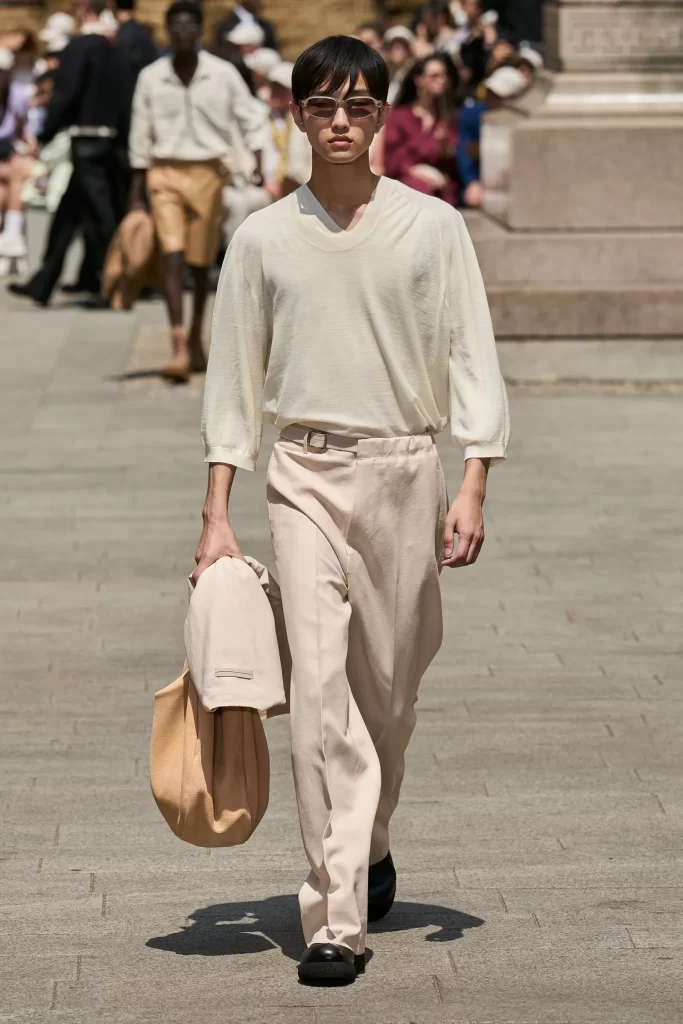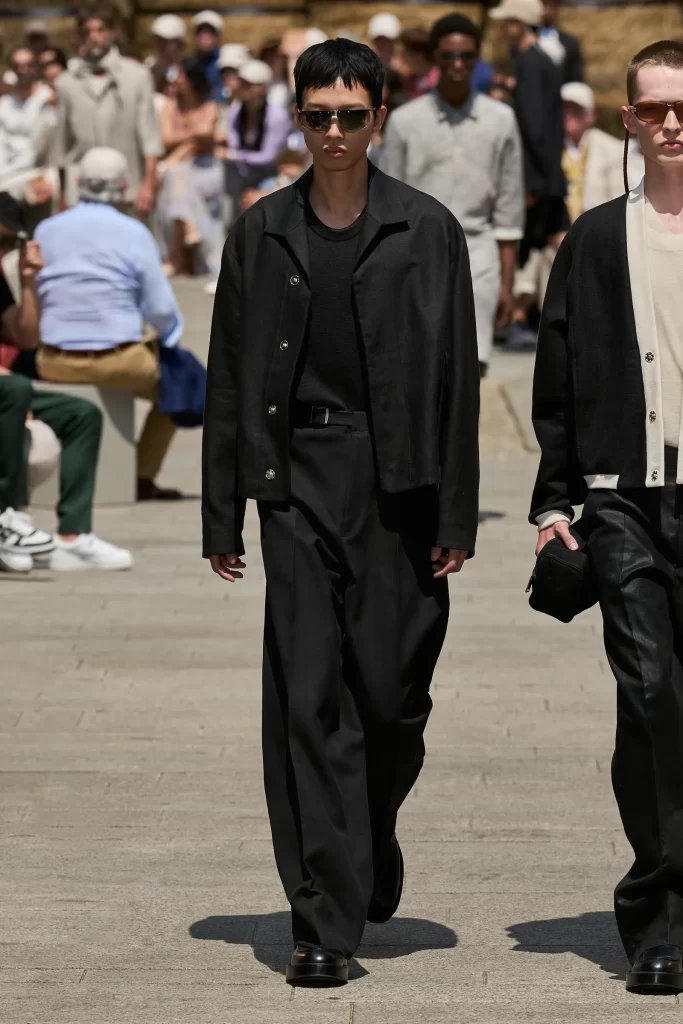"WANTED. DESIRED. ETERNAL. YOUTHFUL." FOREVERWANTEDCLUB THE FASHION & POP CULTURE MAGAZINE
ZEGNA SS24 SHOW


The Zegna show unfolded beneath the watchful gaze of Alessandro Manzoni’s statue, illuminated by the sun’s intense glare. Manzoni’s novel, “I Promessi Sposi” (The Betrothed), played a pivotal role in the development of a unified Italian language, despite being written during a time when the Italian peninsula was divided into various states with distinct dialects. In this picturesque setting, we gathered wearing matching Zegna baseball caps, creating the illusion of a corporate retreat, surrounded by large bales of linen.
Alessandro Sartori, renowned for his work at Berluti and Zegna, has been diligently striving to create a distinct language of tailoring that transcends boundaries, even as the sartorial codes of the past century continue to evolve and adapt to changing tastes and lifestyles. As he expressed before the show, “I believe that the future wardrobe is no longer defined by traditional references. It’s not about jackets, outerwear, knitwear; instead, it’s about tops, underpinnings, bottoms, and shoes. The question is not what the suit of the future will be, but how the suit of the future will be.”
Sartori has already established his unique language and grammar, constantly refining it, and this season he sought to introduce a fresher and lighter perspective. This vision materialized through the use of linen, particularly the new proprietary form named Oasi Linen. The show immersed us in the presence of 192 bales of unprocessed linen, a deep golden hue, transported from Zegna’s partner producers in Normandy, renowned for their ideal climate for linen production, as well as calvados and cheese. These bales would later journey to Zegna’s spinning facility to be transformed into woven fabric, jersey, or knitwear.
Approximately 70% of the collection was composed of the Oasi Linen from Normandy, demonstrating exceptional technical achievements with the material. It appeared in the lining of construction-free leather jackets with camp collars and took on a wool-like density in the boxy “guru collared” jacket, featuring cinching pleats beneath each vertical pocket (this piece defined the collection and was also presented as knitwear). The linen acquired a textured, slubby feel in apricot straight-cut pants paired with a rib-knit cardigan in the same hue. In deep v-neck shirts, shorts, and jackets, it transformed into a jacquard fabric adorned with irregular seams of color. While the collection harmonized with the stone surroundings of Piazza San Fedele in neutral tones, it also bloomed into pale pink, green, and blue hues. And, naturally, camel made an appearance.
With applause filling the air, Sartori took his bow surrounded by models, his creations, an attentive audience, and his vision come to life. Meanwhile, Manzoni’s stoic statue maintained its silence, as if preserving the secrets of the past.
